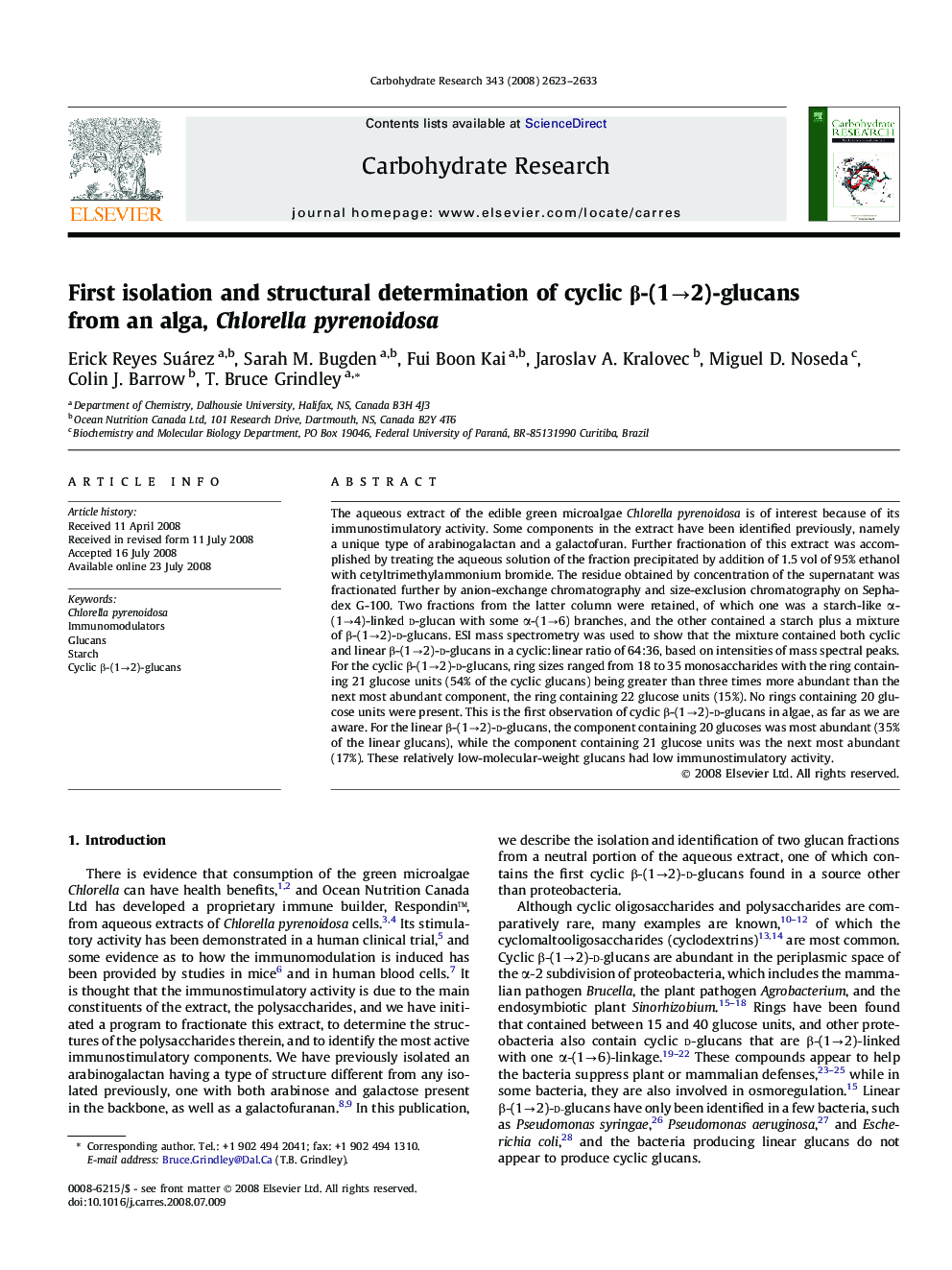| Article ID | Journal | Published Year | Pages | File Type |
|---|---|---|---|---|
| 1389629 | Carbohydrate Research | 2008 | 11 Pages |
Abstract
The aqueous extract of the edible green microalgae Chlorella pyrenoidosa is of interest because of its immunostimulatory activity. Some components in the extract have been identified previously, namely a unique type of arabinogalactan and a galactofuran. Further fractionation of this extract was accomplished by treating the aqueous solution of the fraction precipitated by addition of 1.5 vol of 95% ethanol with cetyltrimethylammonium bromide. The residue obtained by concentration of the supernatant was fractionated further by anion-exchange chromatography and size-exclusion chromatography on Sephadex G-100. Two fractions from the latter column were retained, of which one was a starch-like α-(1â4)-linked d-glucan with some α-(1â6) branches, and the other contained a starch plus a mixture of β-(1â2)-d-glucans. ESI mass spectrometry was used to show that the mixture contained both cyclic and linear β-(1â2)-d-glucans in a cyclic:linear ratio of 64:36, based on intensities of mass spectral peaks. For the cyclic β-(1â2)-d-glucans, ring sizes ranged from 18 to 35 monosaccharides with the ring containing 21 glucose units (54% of the cyclic glucans) being greater than three times more abundant than the next most abundant component, the ring containing 22 glucose units (15%). No rings containing 20 glucose units were present. This is the first observation of cyclic β-(1â2)-d-glucans in algae, as far as we are aware. For the linear β-(1â2)-d-glucans, the component containing 20 glucoses was most abundant (35% of the linear glucans), while the component containing 21 glucose units was the next most abundant (17%). These relatively low-molecular-weight glucans had low immunostimulatory activity.
Related Topics
Physical Sciences and Engineering
Chemistry
Organic Chemistry
Authors
Erick Reyes Suárez, Sarah M. Bugden, Fui Boon Kai, Jaroslav A. Kralovec, Miguel D. Noseda, Colin J. Barrow, T. Bruce Grindley,
